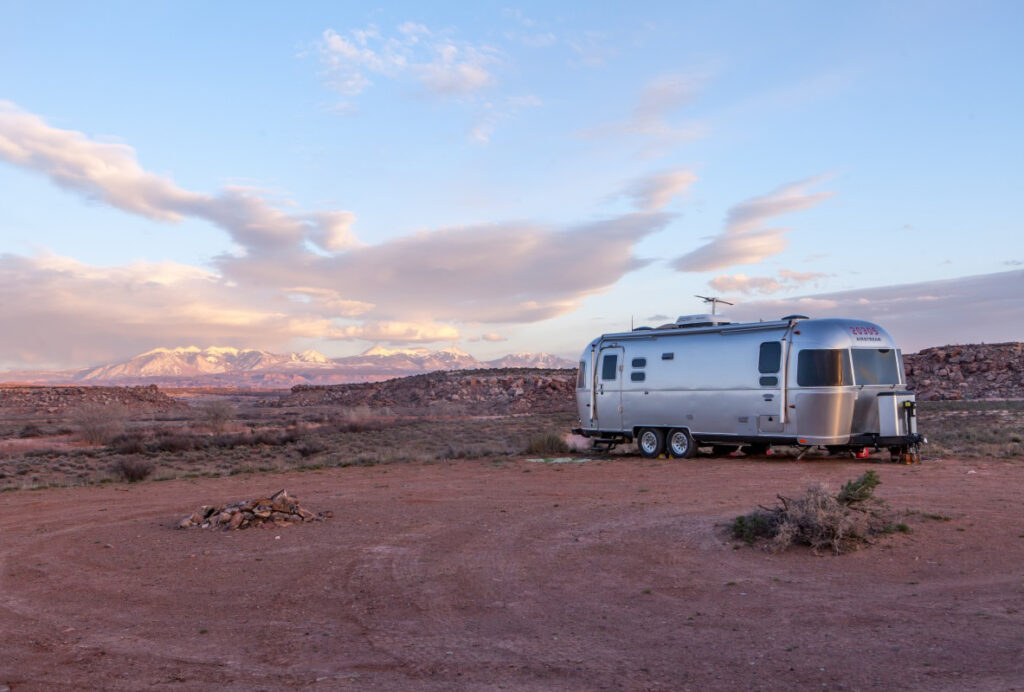Nomadland: Surviving America in the Twenty-First Century
Jessica Bruder
W.W. Norton, $16.95 (paper)
The Age of Dignity: Preparing for the Elder Boom in a Changing America
Ai-jen Poo
The New Press, $16.95 (paper)
We are in the midst of a world-historical demographic transition. Within a few years, the number of people in the world over the age of sixty-five will surpass the number of those under five. This is a fundamental transformation in the human species, and it presents a problem. Our ethical and political categories were designed for a world of the young. From Plato onward, our philosophers have lavished attention on education while almost entirely neglecting end-of-life care. Over the centuries, we have obsessed over how to interpret and shape a social world that has now aged out of existence.
The emancipatory feminism of the future will teach us not only how to parent and how to work, but how to age well and justly.
This is an opportunity for feminism, the intellectual and political tradition best suited for our graying world. After all, feminists have done the most to valorize the labor of caring for those who cannot fully care for themselves. That said, the tradition’s focus has mainly been on parenting, and on the many women faced with the double burden of social reproduction (motherhood) and economic production (labor). That task is noble and unfinished; however, it is not enough on its own. The emancipatory feminism of the future, if such a thing will exist, will teach us not only how to parent and how to work, but how to age well and justly.
The feminism of the twentieth century responded to the call of Swedish feminist Ellen Key, who in 1900 proclaimed the advent of the Century of the Child. She saw that the population was about to explode, and that the century would be dominated by questions about the education and citizenship of the millions of youth crowding new schools and militaries. Were Ellen Key to bestow a name upon our new age of plummeting birthrates and skyrocketing life expectancies, she might call it the Century of the Elderly. This is a century that requires a new style of thinking, and a new kind of feminism.
The dilemma is, in essence, the same as the one faced in the twentieth century. Will the demographic transition of our times be met in ways that reproduce a corrupt system, or in ways that contest it? So far, we seem to be opting for the former. Most responses to global aging have not been political, or even very creative, but rather technocratic. With better-designed pension systems and robotic personal assistants, perhaps, the elderly can be carefully managed—and in ways that create massive pension funds for investment, and massive opportunities for profit.
As we attempt to leverage global aging in the name of global justice, the best tools are unlikely to come from technology companies, and very likely to come from the feminist tradition. Old age is primarily a concern for women, which is surely one reason that it has not received much critical attention. Globally, women live longer, on average, than men—about four to seven years longer, in economically stable countries. At the same time, the massive need for eldercare is met mainly by women. Most eldercare in this country and others is done off the grid by female family members, often tasked with caring for their own dependent children at the same time. When that is insufficient, as it frequently is, the elderly often rely on home health aides, who tend to be women as well.
Feminists have long been drawing attention to the issue of aging. Indeed, it seems to be an occupational hazard of feminist intellectual life that one must write a book on the subject at some point in one’s sixties or seventies. Simone de Beauvoir and Betty Friedan both dedicated their last substantive books to it, and many have followed in their wake. In the last few years alone, Lynne Segal, Martha Nussbaum, and Barbara Ehrenreich have published books on old age. They have performed the necessary and feminist labor of describing the process of aging from the inside, and they have described their attempts to personally come to grips with the transformations of their bodies. And yet a critical shortfall of this literature is that it has not offered a genuinely transformative and intersectional project. These authors, often scathing and radical in their accounts of motherhood and the workplace, have not brought the same social imagination to their accounts of aging.
A critical engagement with aging has to be intersectional because the issue is imbricated with all the other vectors of injustice in our society.
A critical engagement with aging has to be intersectional because the issue is imbricated with all the other vectors of injustice in our society. Elderly African Americans, suffering from unequal health outcomes and the incarceration of a generation, are more likely than elderly whites to age alone and to face crises of care. This was notable in the aftermath of Hurricane Katrina, where issues of climate, race, poverty, and segregation viciously compounded one another. And as in the 2003 European heat wave, the immobile and the frail were most exposed when the levees broke. A clear majority of the victims were over the age of sixty—beneficiaries of the advances in medicine and public health that allowed them to survive for so long, and victims of a society that has not reorganized itself to take account of that success.
It is important to note that our crisis of aging cannot be reduced to a caricature of the young, in their folly, neglecting their elders. That timeworn cliché is irrelevant in a world where middle-aged people perform vast feats of labor to care for their parents, and where the policies that ravage the elder population were put in place by political leaders who are themselves often quite old. The issue, instead, is that we have not, as a society, arrived at a coherent understanding of what it means to age well. If the feminism of the future is to be responsive to the demographics of the future, it should provide one.
The status quo for the elderly, and especially for elderly women, is neither sustainable nor desirable. In it the massive inequalities generated by contemporary forms of capitalism extend into our twilight years. This of course means that some of us can look forward to a comfortable old age of leisure and reflection. The happy few likely includes me and many of you—but we should not be so sure. The vagaries of love, disease, and political economy can bring even the most secure of us into financial ruin. We would then join the many who are already scrambling to scrape together a living and a care regimen with the help of underfunded federal programs, underpaid labor by undocumented immigrants, and unpaid labor by female relatives.
Old age is primarily a concern for women, which is surely one reason that it has not received much critical attention.
This much and more is revealed in two recent books on the subject: Nomadland (2017), an eye-opening work of journalism by Jessica Bruder, and The Age of Dignity (2015), a clarion call for a new approach to aging by the activist and organizer Ai-jen Poo. The former shows how capital is exploiting the elderly themselves, while the latter shows how the same process is ravaging the lives of their caretakers. Together they suggest that the magnificent expansion of the lifespan is being subsumed by the logic of neoliberalism. Here, as elsewhere, the great successes of the twentieth century are devoured by the locusts of the twenty-first.
Bruder’s Nomadland chronicles the surprising number of elderly people who have abandoned their homes and started living in their vans. While technically homeless, they prefer to call themselves “houseless.” Most suffered a combination of blows: lost jobs, failed marriages, and healthcare disasters chief among them. Financial and communal resources might be enough to deal with one crisis, but together they conspire to place downward pressure on these stalwart veterans of the middle class. With her journalist’s eye, Bruder uncovers colorful characters, most memorably a vibrant woman named Linda May. For years, May has been living in her old yellow van, which she affectionately calls the Squeeze Inn. Together with a motley crew of largely female comrades, she has crisscrossed the West, performing all sorts of labor for scandalously low wages.
May and her friends are the ideal labor force for our new century: perfectly mobile, and perfectly disposable. They have no choice but to labor, given the paltry size of their Social Security checks (this is an issue especially for women, given the depressed wages they receive throughout their working lives). You have seen them. These are the people taking tickets at the state fair or tidying up campsites at national parks. They do the sorts of invisible and menial labor that cannot be outsourced. Remarkably, some also do agricultural labor, particularly on the sugar-beet farms of the Midwest. And while they sleep in the parking lots of Walmart, they labor for its gravedigger, Amazon. Through its CamperForce program, Amazon enlists the mobile precariat into its e-commerce machine, sending aged bodies plodding through vast warehouses, powered by complementary pain pills. Once the holiday rush comes to a close, the “workampers” climb back into their vans and hit the road once again.
It might seem that Bruder’s protagonists have fallen through the cracks of the system, but this would be the wrong way to think about it. In the absence of a robust social program, this is the system: they work for our parks; they take advantage of policing protocols that tacitly allow white elders to sleep in parking lots; they live partially on whatever Social Security income they have; and they work for huge government-subsidized companies such as Amazon that are at the forefront of our new economy. They are scraping together work in a “gig economy” that affords them precious few protections and resources, while calling upon all of their creativity and strength. They are at the bleeding edge of neoliberal consolidation, and the only difference between them and their children might be that they can remember a time when they were promised something different.
The elderly poor have no choice but to labor. These are the people taking tickets at the state fair or tidying up campsites at national parks. They do the sorts of invisible and menial labor that cannot be outsourced.
Relatively few elderly people live in vans the way Bruder’s subjects do. But contrary to what one might expect, very few Americans sixty-five or older live in nursing homes or assisted living facilities, either—only about 6 percent. The vast majority prefer to, or have no choice but to, remain in their own homes, where family members provide the bulk of the necessary care labor. This work is most often the province of daughters, a sort of gendered care labor that, for all of its emotional and financial costs, has received far less attention than the reproductive labor of mothering. This system, if it deserves that name, is reaching the breaking point. Elongated lifespans and delayed childbearing have pushed millions of Americans into the so-called “sandwich generation,” caring for children and aged relatives simultaneously (one in seven of us fall into this category). They perform heroic and often invisible feats of care labor in private, often at great personal cost to their own careers and well-being.
In her heartbreaking The Age of Dignity, Poo brings this sort of labor out of the shadows. Poo is director of the National Domestic Workers Alliance and codirector of Caring Across Generations, a campaign dedicated to improving long-term care provision in the United States. The myth of the benevolent and beloved grandparent is not wrong, according to Poo, but it is certainly incomplete. Millions of U.S. families, faced with aging parents and a frayed safety net, find themselves performing feats of unglamorous care labor—labor that, unlike the corollary of childcare, is not socially valorized and does not open up new arenas of sociability. Even in the best cases, where the caring relative is able to access government support and keep her job, the task is onerous and often isolating. For many, it is catastrophic. Poo shares stories of people who leave their job to care for ailing parents, only to be denied unemployment assistance and cast into financial ruin. Others are let go from their jobs as the emotional stress of caregiving diminishes their capacity.
For the many millions of elderly with severe dementia, or without nearby family, this “system” is unworkable. Hence the rise of the home health aide, one of the fastest-growing sectors of the economy. There are currently about 2 million home health aides in the United States—mainly women of color, often undocumented, and usually without healthcare of their own—and in the future there will be millions more. Their labor, like that of the sandwich generation, is necessary to the health and well-being of the body politic, and it is equally invisible. Poo’s book brings it out of the shadows, sharing stories of immigrant caregivers who mediate complex family dynamics, mind-boggling bureaucracy, and difficult lives of their own. Their labor is precarious, and they are open to abuse on all fronts. Many of them become emotionally involved in their employers’ households and feel compelled to perform uncompensated work. Nearly a quarter are paid less than minimum wage.
If current trends continue, the elder boom will be met with the same response as other social and demographic changes in our dismal century: with precarious, gendered, and unorganized labor, performed both by the elderly and by their caretakers. Bruder and Poo make this clear in a way that other feminist literature on aging does not. One of the main tasks of their books is to bring hidden stories of bodies and care into the open, which has long been a basic tool of feminist praxis. They both pursue the corollary, too: the utilization of those stories to ground new theories of social change.
If current trends continue, the elder boom will be met with the same response as other social and demographic changes in our dismal century: with precarious, gendered, and unorganized labor.
What we need are creative, intersectional ways to think about old age that help us to reframe global aging as a blessing and an opportunity. Both Bruder and Poo, in very different ways, help us to do so. Both authors are in awe of the vitality, energy, and creativity that the elderly and their caretakers display, even in the most desperate of circumstances. These are stories of suffering and deprivation, yes, but they are also stories of hope.
Poo brings to life the vast network of caregivers who, despite all of the challenges they face, find the time and the energy to organize. Just as Naomi Klein wants us to use the climate crisis to create a new and more just world, Poo and her collaborators are optimistic that the changing shape of the species will nudge us toward new communities of care and concern—communities that will enlist all of us, not just the elderly.
Poo has a raft of potential solutions in mind. She calls for labor organization among domestic workers and has spearheaded some of that work herself. She calls for innovative new housing arrangements that would make intergenerational community a matter of urban planning rather than dewy nostalgia. She calls for a dramatic expansion of Social Security, alongside new tax-funded benefits, to pay for the home care that many of us will, one day, need. In the end, though, her idea is simple: as more and more of our jobs are automated out of existence, our aging population opens up vast new opportunities for care labor, work that has the potential to be fulfilling, organized, and adequately compensated.
Poo’s is fundamentally a vision for caretakers, although a valorization of care labor would certainly benefit its recipients as well. Bruder, on the other hand, is more concerned with the elderly themselves and their attempts to forge new styles of living. Bruder’s characters often encounter moments of despair, especially when the realities of healthcare on the run collide with the grueling labor they are asked to do. And yet the reader’s more general impression is that May and her friends are astonishingly vibrant and creative. The point is not that they seem “young,” but that they seem engagingly old.
May especially is a force of nature, and she refuses to define herself as a woman in decline or as the victim of a fraying U.S. experiment. Like many of Bruder’s subjects, she prefers to see herself as a pioneer in the forging of a new American dream. While we should not romanticize her plight, we should not pity her either. She and her peers gather around quasi-utopian communities, online and in deserts, devoted to anti-consumerist values. They create shadow economies of books and techniques; they forge new friendships and they fall in love. They have, in other words, much to give—and one suspects we are all worse off because so much of that energy is spent living precariously and under exploitative working conditions. Nomadland is, in the end, a book about the creation of new kinds of life amidst the wreckage of economic exclusion. For May, economic depression can be an opportunity for reinvention, and for the recovery of forms of freedom and community undercut by an exhausted capitalism.
We need creative, intersectional ways to think about old age that help us to reframe global aging as a blessing and an opportunity.
Today’s seventy-year-olds, it should be remembered, were twenty in 1968. At least some of them are trying to reimagine and politicize old age just as they once did with youth. New ideas for how to age in a just and sustainable way, that is, can come from today’s elderly, and in fact this is already happening. Despite the obvious carbon intensity of their lifestyles, many of Bruder’s subjects hope to live off the land. While the abandonment of their brick-and-mortar past was a personal tragedy for all of them, they have used it as an opportunity to rethink the nature of “home.” In the process, they are beginning to imagine how it might be possible for all of us to live eighty years without destroying the climate. May’s Squeeze Inn, for instance, is filled with notebooks and plans for her proposed future dwelling: a self-sustaining, environmentally friendly home, made largely out of trash, and known as an Earthship. The idea comes from a pioneering green architect of May’s generation named Michael Reynolds (now in his seventies). The book ends with May’s struggle to make the Earthship a reality, and the reader is left in suspense. The decision is a canny one, for May’s struggle is really all of ours, and the outcome is undecided.
Bruder and Poo point the way toward a properly feminist grappling with the Century of the Elderly. They remind us that old age need not be dreary to think about, or to experience. The solutions to the elder boom are not just medical and actuarial. They are also political. We often think of old age as a sort of perverse accompaniment to adolescence: a time free of economic cares, when we can finally become the individual we always hoped to be. This way of framing the issue occludes collective solutions to what is ultimately a collective problem. There are two paths ahead of us: one direction is familiar, and it involves lining the pockets of Jeff Bezos at the expense of the elderly. The other is the path not taken, and it leads West. While Bezos funnels his billions into spaceships, May is patiently collecting trash in the Arizona desert, and using technology in a very different way. Her Earthship, should it ever come to be, would help turn the wreckage of our decaying system into something new: a habitat fit for the gray and hot century before us.








